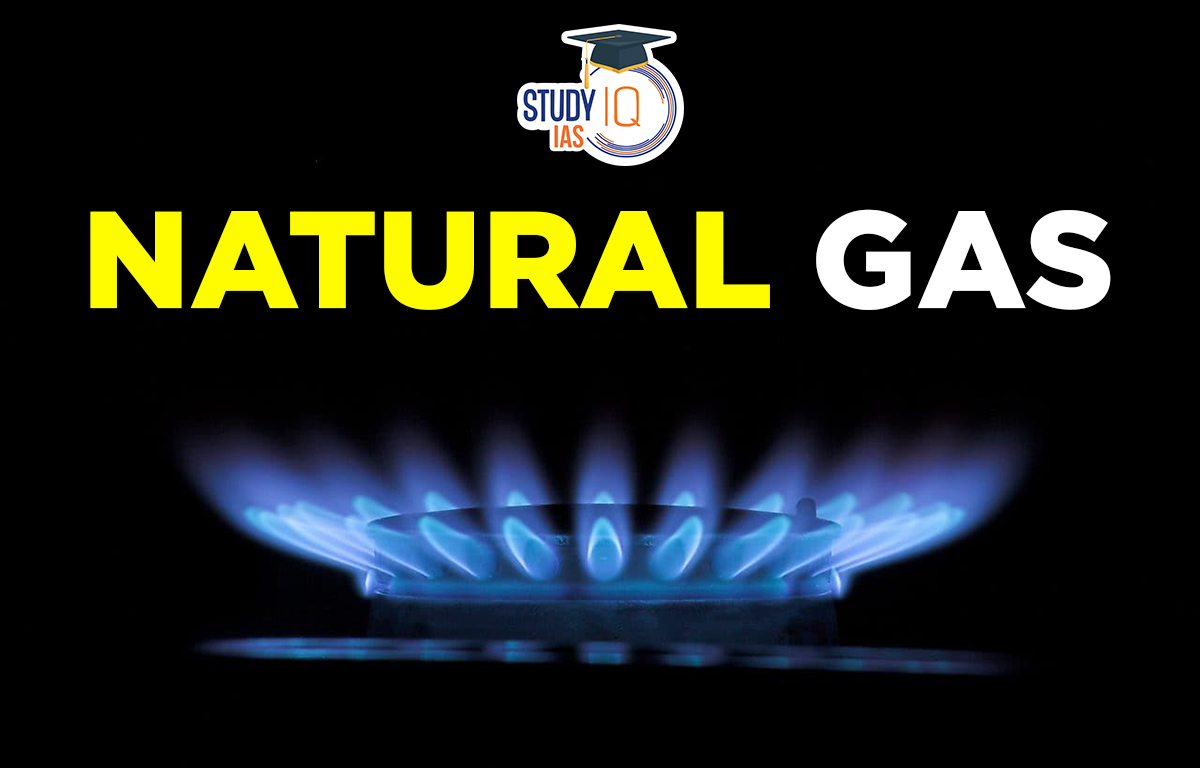Table of Contents
Natural Gas
Natural gas is a natural mix of hydrocarbon gases. It mainly contains methane, along with other gases like carbon dioxide, nitrogen, and hydrogen sulfide. You can find natural gas in deep underground rock formations and coal beds. It can also be found as methane clathrate or with other hydrocarbon deposits. Petroleum is often found near or with natural gas.
Read about: Energy Resources
Natural Gas Processes
There are two main processes that produce most natural gas:
- Thermogenic
- Biogenic
Methanogenic organisms produce biogenic gas in marshes, bogs, landfills, and shallow sediments. Thermogenic gas is produced from buried organic material at higher temperatures and pressures deeper in the soil. Natural gas must be processed to eliminate impurities such as water. This is done to make it marketable before it may be used as fuel. Byproducts of processing include ethane, propane, butane, pentane, hydrogen sulphide, carbon dioxide, water vapour, helium, and nitrogen.
Read about: Hydropower Plants in India
Global Distribution of Natural Gas
The USA is the largest producer accounting for 23% of the world’s natural gas production. It is followed by Russia, Iran, and Qatar. Some major oil fields are mentioned below:
| Country/Continent | Region/Location |
| Russia | West Siberia east of the Gulf of Ob, Urengoy, and Yamburg. |
| Europe | Norway: Troll field
Netherlands-Groningen |
| North America | USA- Marcellus Shale, Hugoton
Canada-Elmworth Mexico-Cantrell |
| Asia | Arabian-Iranian basin
Qatar-North Field Indonesia-North Sumatra |
| Africa | Algeria- Hassi R’Mel |
Read about: Nuclear Power Plants in India
Distribution of Natural Gas in India
- Odisha, Assam, Tripura, the Gulf of Kutch, the Gulf of Khambhat, the Bassein field, the Bombay High, Barmer in Rajasthan, the KG basin, the Cuddalore district of Tamil Nadu, etc. India has 541 BCM (on-shore, in Assam, and Gujarat) of economically feasible natural gas reserves, plus an additional 190 BCM offshore in the Gulf of Cambay and 190 BCM in the Bombay High.
- A vast deposit of 400 BCM was just found in the Tripura Basin. In addition to these, there is a sizable reserve near the Andaman and Nicobar islands, and 72 BCM is located in the Rava structure. Based on remote sensing data, the reserves in Andaman and Nicobar are projected to be over 1700 BCM. Production has not yet started because it hasn’t been determined whether it would be profitable.
- This reserve will meet India’s demands for the next 100 years. This could lead to an economic revolution in Eastern India.
Read about: Major Ports in India
Natural Gas Benefits
Here are the various benefits of Natural Gas described below:
- It is used for heating, cooking, and power generation.
- It is also used as car fuel and a chemical feedstock for making plastics.
- It burns completely. Hence, it is cleaner as compared to other energy sources.
- It emits 70% less carbon dioxide when compared to other fossil fuels. It does not create ashes after releasing energy.
- Natural gas was predominantly employed in the nineteenth and twentieth centuries for lighting residential and commercial areas.
- It now has a far larger range of industrial and home applications.
- Turbines are turned by it to produce wind and sun energy.
- It is a domestic fuel as well. It operates heaters, ovens, boilers, and other appliances while heating our homes.
- For cooking and heating, some families utilise compressed natural gas (CNG), which is gas that has been held under high pressure.
- For low-load cars that demand excellent fuel economy, CNG is also a reasonably priced and environmentally beneficial transportation fuel.
- Off-road trucks and trains are powered by LNG or liquefied natural gas.
Read about: Manganese Ore
Natural Gas Importance
- Currently, about 40% of natural gas is used to make fertilizers. Around 10% is used for LPG, and about 30% for electricity. Natural gas production has grown, especially since 1971.
- Nearly 10% of India’s electricity comes from gas-powered plants, but many aren’t running due to a lack of fuel. Existing plants use expensive imported LNG at less than full capacity.
- India doesn’t have enough oil to meet its energy needs, and slow policy decisions make the problem worse. To protect against external shocks, we need to diversify our energy sources with alternative fuels.
- Globally, natural gas provides about 25% of energy, but in India, it only accounts for 6%, with coal and oil being more common. The Indian government aims to increase natural gas use to 15% by 2030.
Read about: Chromite Ore
Natural Gas Usage Limitations
- Natural gas is a finite, non-renewable resource. It is found extremely deep within the earth.
- We can not collect all the gas from a deposit because our technology is not advanced enough.
Read More: Iron Ore
Natural Gas UPSC
Up until 2024, the government will spend over 60 billion dollars on gas infrastructure across the nation, with a goal of raising gas’s proportion in the energy mix to 15% by 2030. Currently, gas makes up 6% of the nation’s overall energy mix. Currently, imports satisfy about half of the world’s demand for natural gas. India is currently the fourth-largest LNG importer. According to the Indian government, natural gas will make up 15% of the nation’s energy mix by 2030.
Read More: Minerals


 Important Lakes of India, State wise and...
Important Lakes of India, State wise and...
 Buddhism History, Origin, Sect, Councils...
Buddhism History, Origin, Sect, Councils...
 Andaman and Nicobar Islands, History, Cl...
Andaman and Nicobar Islands, History, Cl...





















